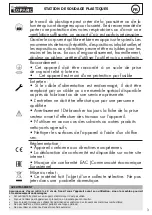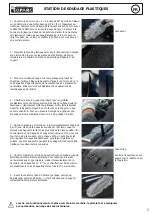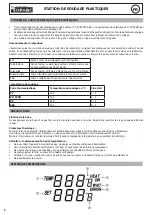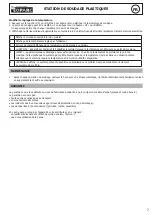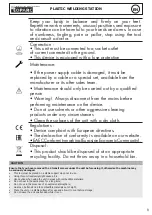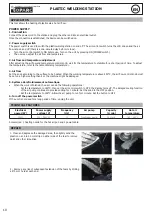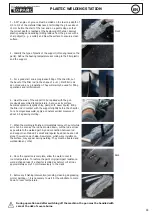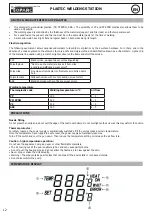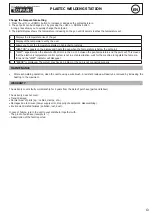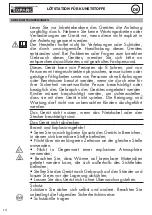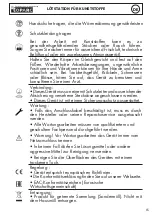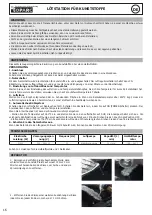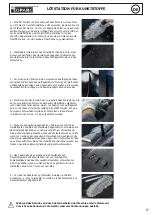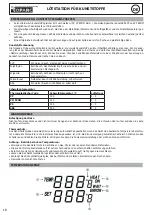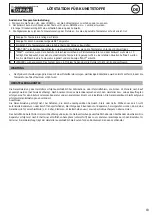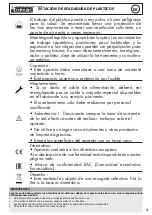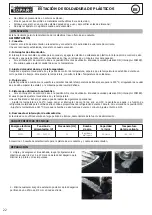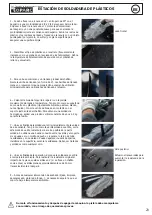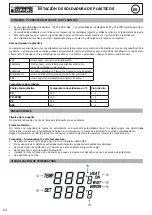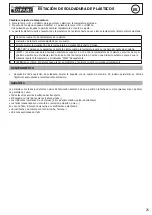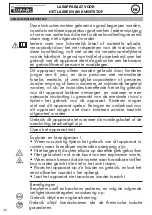
11
PLASTIC WELDING STATION
EN
Translation of the original instructions
3 - A 90° angle «V» groove must be milled on the tear to a depth of
2/3 to 3/4 of the material thickness. Start milling the groove about
10 mm before the start of the tear and on a gentle slope so that
the correct depth is reached at the beginning of the tear. Remove
plastic peelings and sanding/milling residue from the groove with a
sharp object (e. g. a cutter) and blow the surface to ensure a clean
surface.
Front
4 - Identify the type of plastic of the support (often engraved on the
parts). Define the heating temperature according to the filler plastic
and the support.
5 - For a good start and a progressive filling of the chamfer, cut
the bevel of the filler rod (in the shape of a «V»). Flat filler rods
do not require any preparation. They will mainly be used for filling
operations and reinforcement.
6 - Heat the area of the support to be repaired with the gun
previously assembled to temperature. As soon as its surface
becomes «plastic» (slightly shiny, pasty, soft, never liquid). Bring
the filler rod in contact with the support slightly before the chamfer.
For a homogeneous weld, apply a constant vertical pressure of
about 2-3 kg during melting.
7 - When the welding is finished, immediately remove the unit while
air is hot. As soon as the rod has cooled down, cut the rod as close
as possible to the welded part. A good connection between rod
and support is obtained if a small and regular bead can be seen all
along the weld on each side. New cracks, which were invisible on
the surface, may appear during welding. They must be treated and
welded like any other.
8 - Once the operation is complete, allow the weld to cool to
room temperature. To restore the part’s original impact resistance,
weld V-shaped rods (if a chamfer is milled as before) or flat rods
approximately every 30 mm transversely to the crack.
Back
9 - Before any finishing intervention (sanding, cleaning, degreasing,
primer painting...), it is necessary to wait for the substrate to come
down to room temperature.
During operation and after switching off the machine, the gun must be handled with
care at the risk of severe burns.



